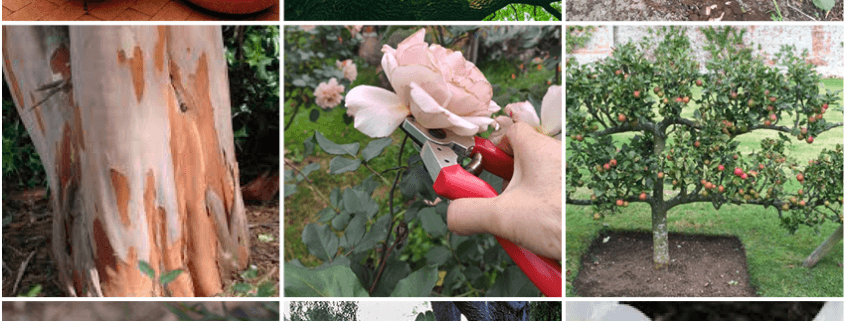Spring has Sprung
As the warmer months progress there are a number of things we should be attending to in our gardens to prepare both ourselves and our gardens for the warmer months ahead.
If you haven’t already thought about creating summer shade in the garden, now is a good time to look at where you might need it, both for plants and just as importantly to shade the home.
Deciduous shade trees are an absolute integral part of the overall landscape of any garden. They not only provide a covering for some of the more delicate plants in the garden but also can be used to throw shade over a western window or provide some protection for an outside sitting area, whether attached to the home or within the outer garden.
Care must be taken, however, to locate the tree in such a position so as not to cause later issues with the proximity to the house or other buildings. My suggestion is to plant the tree at a distance of at least one and one half of the radius of the tree from the building.
In selecting plants for under the tree, select plants that either enjoy full or part shade but can also handle any winter condition that might come their way when the tree drops its leaves.
Another important thing to keep an eye on is water under the trees. A light shower of rain that can provide some respite to the garden on a warm day might not necessarily reach the ground under the dense canopy of the tree so additional watering will be required in this case.
Mulching is also another very important task to get on with. I regularly discuss this in the column as I think that good mulch can be the saviour of gardens when in the height of summer our rainfall becomes less and the pressure to provide water to our gardens increases. There are several forms of mulch that can be used including wood mulches, lucerne or sugar cane and different forms of gravel.
Hard wood mulches can be used around more permanent trees and shrubs and the softer lucerne and sugar cane mulches on the flower and vegetable beds.
The softer mulches don’t have a great life span but as they decompose they add nutrition to soils and in their breakdown improve the texture and structure of the soil. This will encourage worm activity and also give the plants a better ability to take up nutrients in the soil.
When applying nutrients to plants that have wood mulches, it is good to pull the mulch back from around the plant, apply the fertiliser and put the mulch back. Remember to apply the fertiliser at the drip line of the plant and not up against the stem or trunk.
General garden watering in the warmer months is also a very important task and it is crucial to the plants survival that it is done in a proper manner.
Lawns should be deep watered about once a week and not daily as I see some gardeners do. Deep watering encourages the root system of the grass to grow deeper into the soil which then gives it the ability to withstand longer periods of dry. This is the same for trees and shrubs, however vegetables need to be watered a bit more frequently to have them grow faster and therefore crop sooner rather than later.
Insect pests are out and about so a keen eye should be kept on plants for signs of aphid and thrip attack, citrus shield bugs and citrus leaf miner. A systemic spray like Confidor will control the sap suckers and some pest oil will control the leaf miner.
One of the most damaging insect pests that will also be on the move are fruit flies. There are several methods of control including traps that will indicate the flies are present. Then appropriate chemical application is warranted or sticky traps that will also catch them. A fairly recent product is an insecticide derived from naturally occurring beneficial soil bacteria called Spinosad, which kills fruit flies; and a protein based bait, which fruit flies can detect from several meters away is also now available.
Although we haven’t had a lot of wet weather at the writing of this column and with some early stone fruit setting, keep an eye out for fungal diseases and take appropriate action.
Catch you next month


